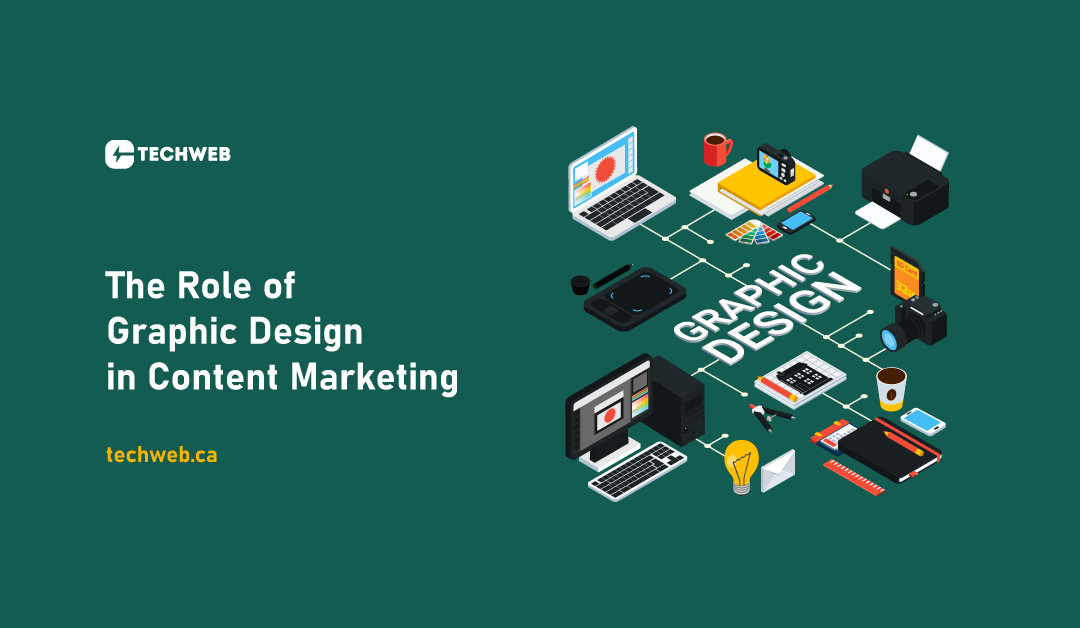In this blog, we’ll explore the multifaceted role of graphic design in content marketing and delve into the ways it enhances the overall impact of marketing efforts.
1. Visual Storytelling
Graphic design is a powerful tool for visual storytelling. It enables brands to convey complex narratives, messages, or information in a visually compelling and easily digestible format. Whether through infographics, illustrations, or multimedia content, graphic design adds depth and resonance to the stories brands aim to tell.
2. Capturing Attention
In the crowded digital landscape, grabbing and holding the audience’s attention is a constant challenge. Well-crafted visuals are attention magnets. Compelling graphics, images, and illustrations entice users to engage with content, creating a strong first impression that encourages further exploration.
3. Brand Consistency
Consistency is key in building a strong brand identity. Graphic design ensures that visual elements across all content align with brand guidelines. From color schemes and typography to imagery and logos, cohesive design creates a recognizable and trustworthy brand presence.
4. Improved User Experience
A well-designed user experience extends beyond website navigation. Graphic design influences how users consume and interact with content. Thoughtful design choices, such as clear layouts, intuitive visuals, and engaging multimedia, contribute to a positive and memorable user experience.
5. Enhancing Readability
Typography and layout are crucial components of graphic design that directly impact content readability. Well-chosen fonts, proper spacing, and strategic use of colors enhance text legibility, making content more accessible and enjoyable for the audience.
6. Social Media Engagement
In the realm of social media, where scrolling is swift, eye-catching visuals are essential for stopping the scroll. Engaging social media graphics, including shareable images, memes, and visually appealing posts, contribute to increased visibility and audience engagement.
7. Infographics for Informational Impact
Infographics are a graphic designer’s powerhouse when it comes to presenting data and complex information. They transform dull statistics into visually engaging narratives, making information more memorable and shareable across various platforms.
8. Call-to-Action Emphasis
Graphic design plays a crucial role in emphasizing calls-to-action (CTAs). Whether it’s a button, banner, or pop-up, well-designed CTAs draw attention and guide users toward desired actions, such as making a purchase, subscribing, or downloading content.
9. Search Engine Optimization (SEO)
Visual elements contribute to SEO efforts. Search engines consider factors like image alt text and file names when ranking content. Optimized images not only enhance the accessibility of content but also contribute to better search engine visibility.
10. Versatility in Content Formats
Graphic design facilitates the adaptation of content across various formats. Whether for blog posts, social media, email newsletters, or presentations, designers can tailor visuals to suit different platforms, ensuring a consistent brand message across the content spectrum.
11. Evoking Emotion and Connection
Beyond conveying information, graphic design has the power to evoke emotions and create a connection with the audience. Thoughtful color choices, imagery, and design elements contribute to a brand’s emotional appeal, fostering a deeper connection with consumers.
Conclusion
In the dynamic landscape of content marketing, graphic design emerges as a fundamental force that goes beyond aesthetics. It serves as the bridge between brands and audiences, transforming content into visually compelling narratives that resonate and leave a lasting impact. By recognizing the pivotal role of graphic design and integrating it seamlessly into content marketing strategies, brands can elevate their storytelling, engage audiences effectively, and build a visual identity that stands out in the digital noise.

